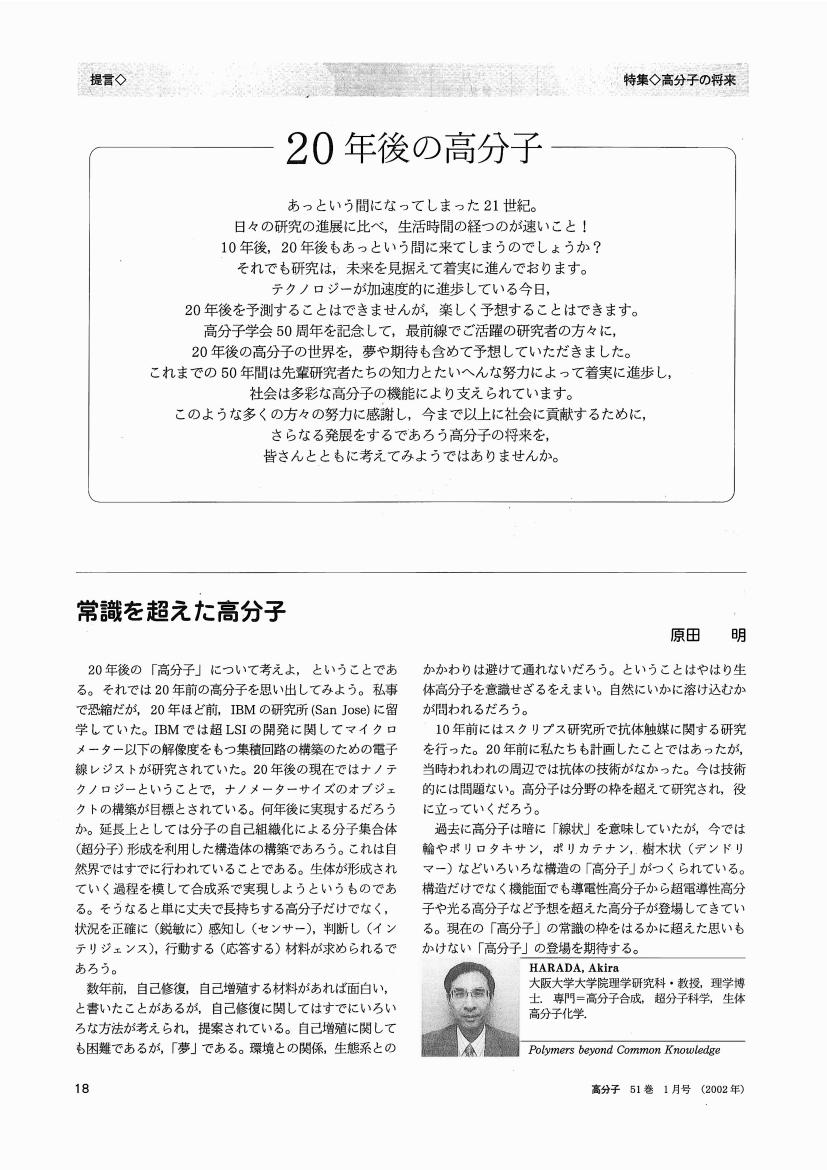28 0 0 0 OA 20年後の高分子
4 0 0 0 OA 分子グラフェンの自己組織化によるグラファイトナノチューブ
- 著者
- 相田 卓三
- 出版者
- Japan Society of Coordination Chemistry
- 雑誌
- Bulletin of Japan Society of Coordination Chemistry (ISSN:18826954)
- 巻号頁・発行日
- vol.53, pp.17-23, 2009-05-31 (Released:2009-10-01)
- 参考文献数
- 20
This review article gives an overview of our recent discovery that a Gemini-shaped hexa-peri-hexabenzocoronene (HBC) amphiphile (1) and its derivatives undergo highly controlled self-assembly to form a new family of nanotubes that may be called ‘graphite’ nanotubes. Compound 1 possesses hydrophilic triethylene glycol (TEG) chains on one side of the HBC core and hydrophobic dodecyl side chains on the other. The nanotubes are characterized by uniform diameter and wall thickness, a large aspect ratio, and designable inner and outer surfaces. Furthermore, they possess a helical chirality. In fact, under certain conditions, a coiled assembly, which is a kinetically preferred product, is formed temporarily and then transforms, on annealing, into a tubular assembly. Furthermore, HBC derivatives bearing a stereogenic center can form coiled and tubular assemblies with a one-handed helical chirality. Analogous to compound 1, HBC amphiphiles carrying functional groups at the TEG termini self-assemble in a highly controlled manner, affording surface-functional nanotubes. As one of the ideal designs for photovoltaic materials with a nanometric size regime, photoconductive nanotubes with a coaxial configuration of the donor/acceptor heterojunction is highlighted.
1 0 0 0 OA 29.石炭の超臨界水-フェノール混合溶媒抽出
- 著者
- 柿沼 伸良 相田 卓 佐藤 剛史 阿尻 雅文 新井 邦夫
- 出版者
- 一般社団法人 日本エネルギー学会
- 雑誌
- 石炭科学会議発表論文集 第38回石炭科学会議 (ISSN:24238295)
- 巻号頁・発行日
- pp.123-126, 2001-11-13 (Released:2017-03-22)
Taiheiyo coal extraction experiments with supercritical water (SCW) and SCW-Phenol mixtures were conducted at 400℃ and 25MPa using a semi-continuous apparatus. With increasing the concentration of phenol, the extraction yield increased up to 80wt%-daf. Extraction yield of Yallourn coal extraction shows 80wt%-daf, while that of Adaro coal shows 65wt%-daf with the SCW-PhOH (80wt%) mixtures. Mechanism of the co-solvent reactive extraction was discussed based on the analysis of the products. This suggests the capping effect of phenol to prevent from polymerization of products.
1 0 0 0 OA イモータル重合分子量のそろった高分子の合成
- 著者
- 相田 卓三 井上 祥平
- 出版者
- 公益社団法人 高分子学会
- 雑誌
- 高分子 (ISSN:04541138)
- 巻号頁・発行日
- vol.35, no.11, pp.1014-1017, 1986-11-01 (Released:2011-10-14)
- 参考文献数
- 15
- 被引用文献数
- 2

